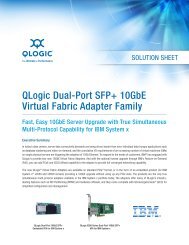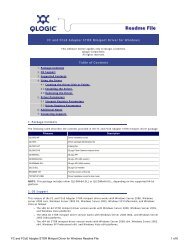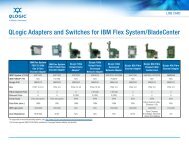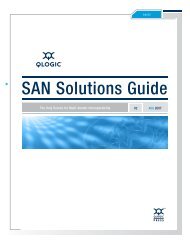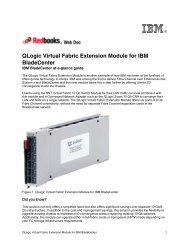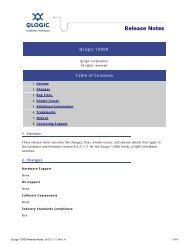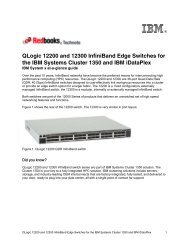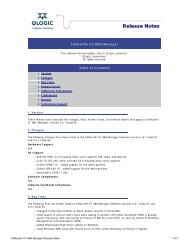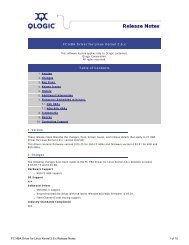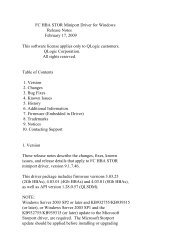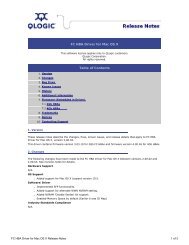Chapter 1. IBM Flex System FC3171 8 Gb SAN Switch - QLogic
Chapter 1. IBM Flex System FC3171 8 Gb SAN Switch - QLogic
Chapter 1. IBM Flex System FC3171 8 Gb SAN Switch - QLogic
Create successful ePaper yourself
Turn your PDF publications into a flip-book with our unique Google optimized e-Paper software.
Table 23 describes the port administrative states. To change the port administrative<br />
state, do the following:<br />
<strong>1.</strong> Select one or more ports in the faceplate display.<br />
2. Open the Port menu and select Port Properties to open the Port Properties<br />
dialog.<br />
3. Select the Port State option from the drop-down list.<br />
4. Click the OK button to write the new port state request to the switch.<br />
Table 23. Port administrative states<br />
State<br />
Online<br />
Offline<br />
Diagnostics<br />
Downed<br />
Description<br />
Activates and prepares port to send data.<br />
Prevents port from receiving signal and accepting a device login.<br />
Prepares port for testing and prevents the port from accepting a device<br />
login.<br />
Disables the port.<br />
Port types<br />
To display port type status, open the View menu, and select View Port Types.<br />
Table 24 lists the possible port types and their meanings. The ports can be<br />
configured to self-discover the proper type to match the device or switch to which it<br />
is connected.<br />
To change the port type, do the following:<br />
<strong>1.</strong> Select one or more ports in the faceplate display.<br />
2. Open the Port menu and select Port Properties to open the Port Properties<br />
dialog.<br />
3. Select the Port Type option from the drop-down list.<br />
4. Click the OK button to write the new port type to the switch.<br />
Table 24. Port types<br />
State<br />
F_Port<br />
FL_Port<br />
G_Port<br />
GL_Port<br />
E_Port<br />
Donor<br />
Description<br />
Fabric port—supports a single public device (N_Port).<br />
Fabric loop port —self discovers a single device (N_Port) or a loop of up to<br />
126 public devices (NL_Port).<br />
Generic port—self discovers as an F_Port or an E_Port.<br />
Generic loop port—self discovers as an F_Port, FL_Port, or an E_Port.<br />
GL_Port is the default port type. A single device on a public loop will<br />
attempt to configure as an F_Port first, then if that fails, as an FL_Port.<br />
Expansion port—the mode that a G_Port or GL_Port is in when attached by<br />
an ISL (inter-switch link) to another fibre channel switch.<br />
Donor port—allows buffer credits to be used by another port.<br />
92 <strong>IBM</strong> <strong>Flex</strong> <strong>System</strong> <strong>FC3171</strong> 8 <strong>Gb</strong> <strong>SAN</strong> <strong>Switch</strong> QuickTools User’s Guide



